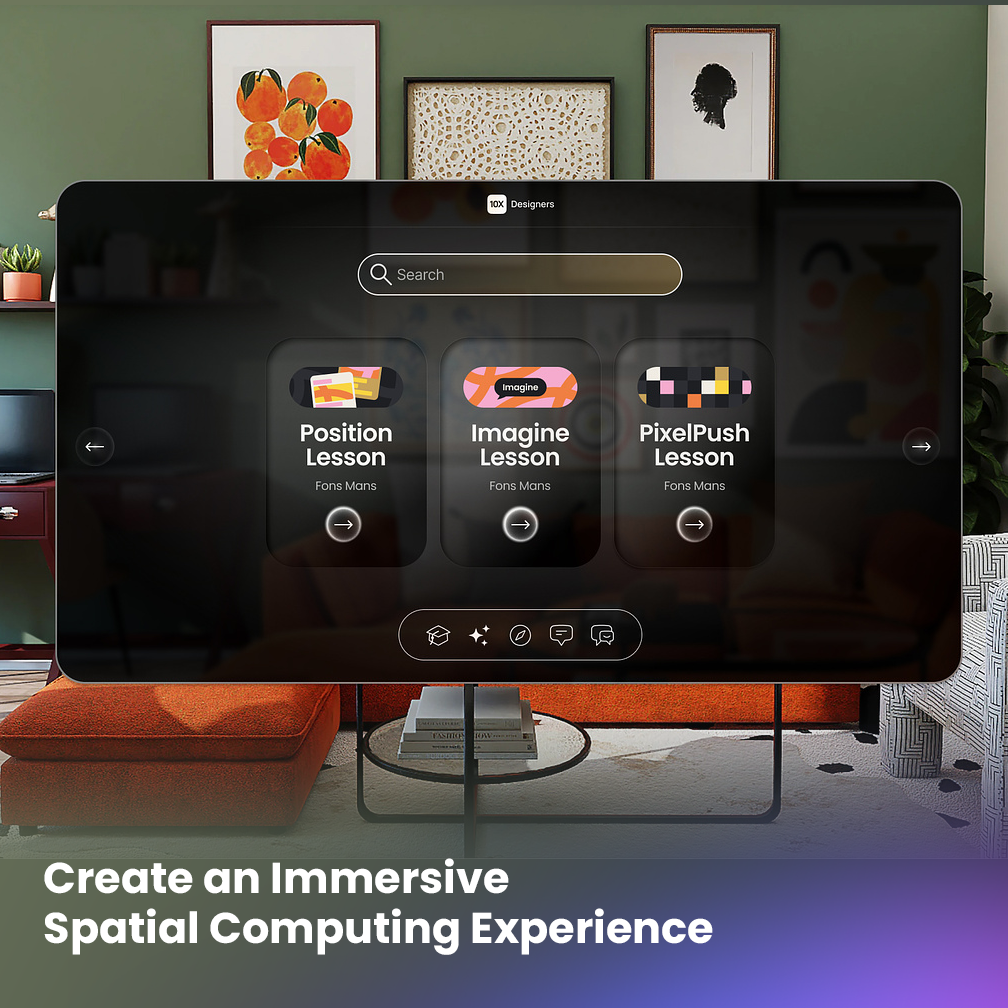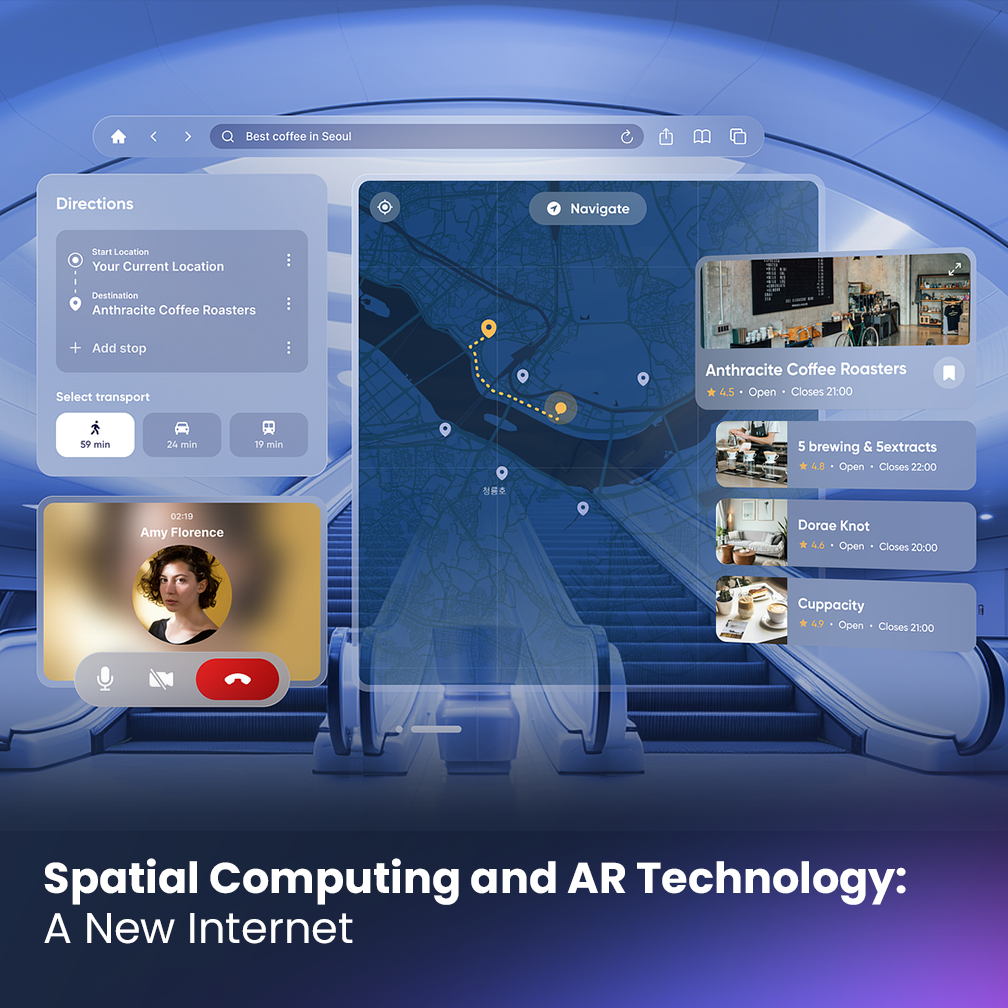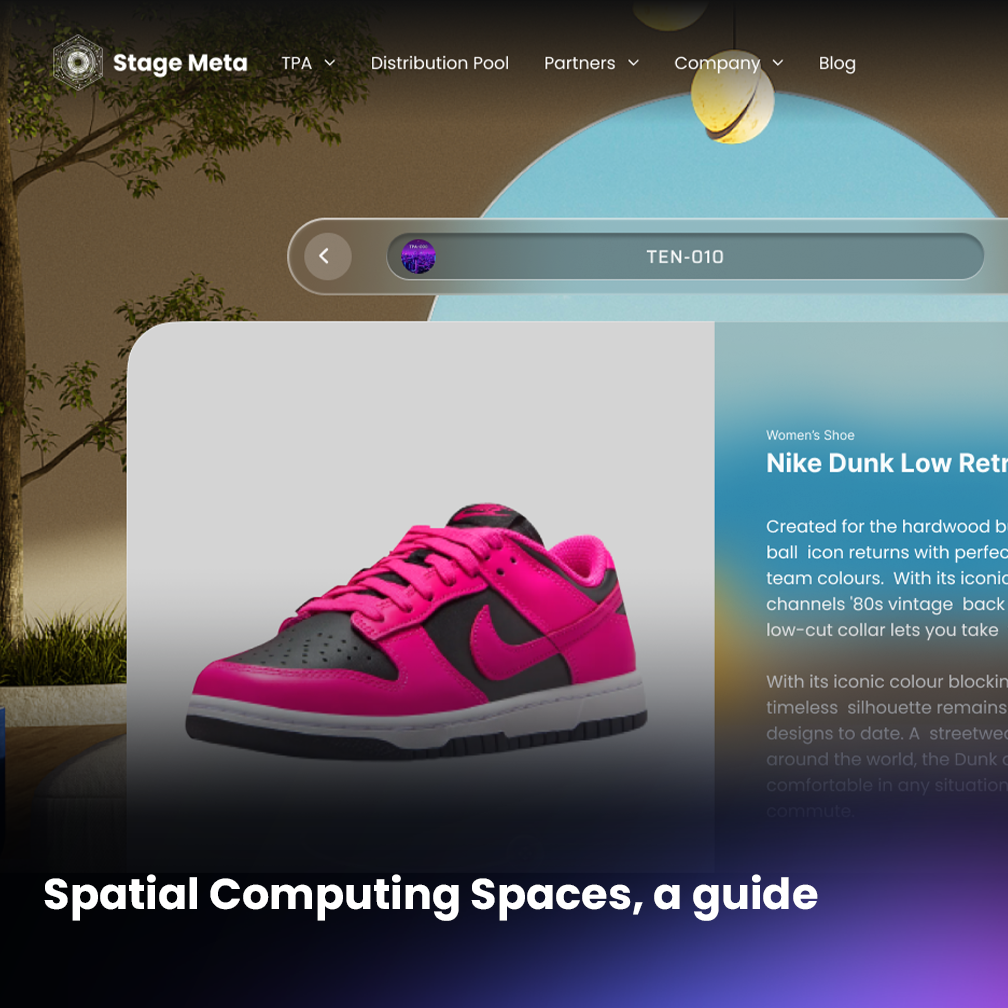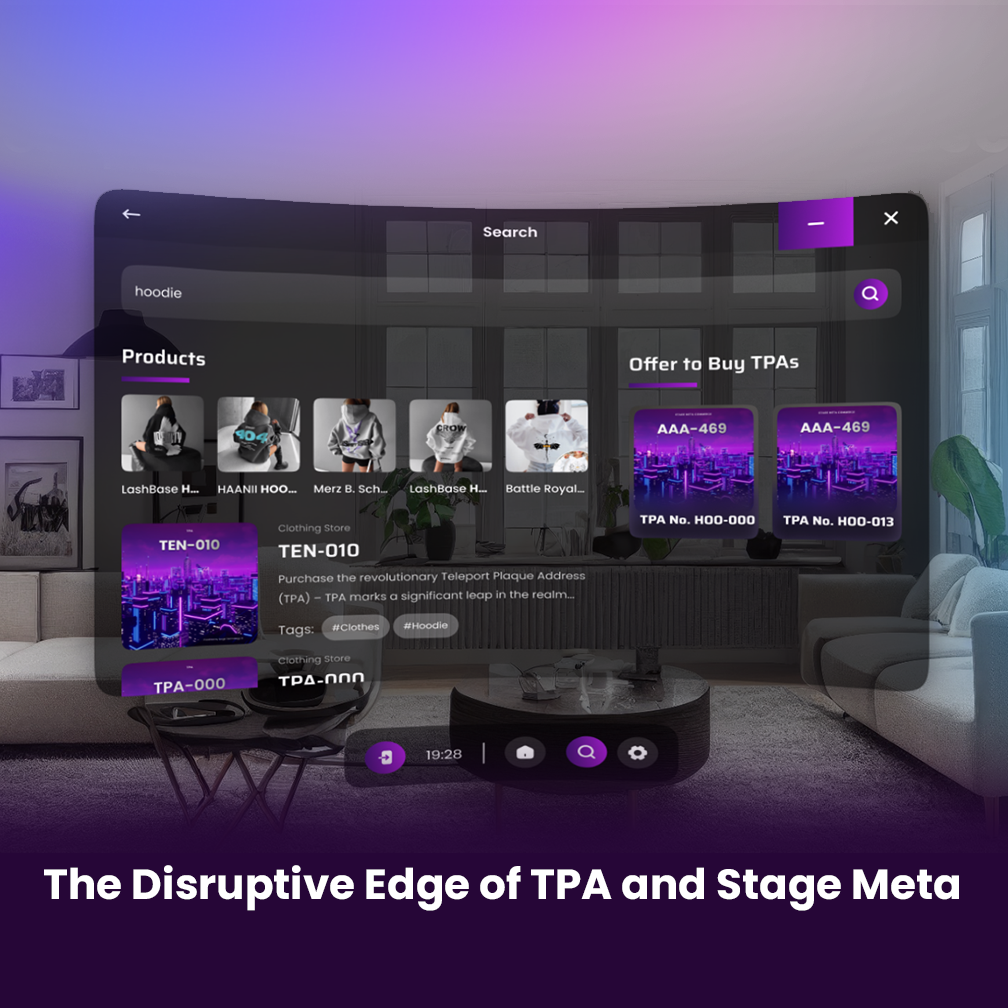Create an Immersive Spatial Computing Experience

Estimated reading time: 4 minutes
Spatial computing is a digital world that has been rapidly gaining popularity in recent years. It allows users to explore, connect, and interact in virtual worlds that are as realistic as the ones we inhabit in real life, for which immersive experiences are a must for users of this new internet.
However, creating an immersive spatial computing experience for users requires more than just technology; it also needs creative storytelling, sensory inputs, and interactive elements. In this blog post, we’ll explore what makes spatial computing truly immersive and how developers can create engaging user experiences.
Virtual Reality Technology
When it comes to spatial computing immersion, Virtual Reality is a key component.
Virtual Reality allows users to become absorbed in spatial computing and explore its 3D visuals and audio capabilities as if they’re in a real environment. By utilizing cutting-edge technology and creative storytelling, developers can make their spatial computing world come alive for users by providing them with a realistic and engaging experience.
For example, developers can incorporate Virtual Reality elements such as motion sensors and interactive avatars that allow users to move and interact in spatial computing as if they were actually there. They can also create 3D visuals and audio tracks that make spatial computing feel even more alive. By combining these elements with interesting characters and storylines, users can truly become immersed in spatial computing.
In addition to creating an engaging visual experience, developers must also consider how they can make spatial computing even more immersive by incorporating sensory inputs into their design. This allows users to feel as if they’re actually in spatial computing.
Sensory Inputs
Sensory inputs can be used to enhance spatial computing experience by allowing users to feel their virtual environment.
This is done through the use of haptic feedback or vibration technology, which gives users tactile sensations when they interact with objects in spatial computing. For example, when a user touches a virtual object, they may receive a vibration or feedback through a controller or input device that simulates the feeling of touching something in real life.
By incorporating haptic feedback into spatial computing design, developers can create an even more immersive experience for users. This technology can also be used to make spatial computing elements such as avatars and objects respond to user interaction in a realistic way.
In addition to haptic feedback, users can also experience spatial computing immersion through tactile inputs such as temperature or moisture sensors. This allows developers to create a more realistic environment for users by allowing them to feel their spatial computing world in the same way they would experience a real one.
Interactivity
Spatial computing immersion can be further enhanced by creating interactive elements for users to interact with. This can include minigames, virtual objects that react to user input and even spatial computing tournaments or challenges. By providing users with engaging activities to participate in, developers can make the spatial computing world come alive for them and keep them engaged as they explore deeper into its depths.
With the right combination of technology, creativity, and storytelling, developers can create a platform that immerses its users in an unforgettable virtual world. By utilizing these elements to craft an immersive spatial computing experience, developers can ensure that users keep returning to their spatial computing world.
Consider the users’ needs and expectations
Creating a truly immersive spatial computing experience requires careful consideration of the user’s needs and expectations. Developers must consider the types of technologies they use, how they integrate them into the spatial computing world, and how to create a compelling story for users.
In addition, developers must ensure that their spatial computing is accessible to as many users as possible. This requires creating spatial computing elements that are compatible with various input devices and ensuring compatibility across different platforms. Developers should also consider how to make spatial computing elements accessible for disabled users.
Finally, developers should be mindful of spatial computing’s scalability. As spatial computing grows and develops over time, developers must ensure that their spatial computing can expand without sacrificing user experience or accessibility.
By taking into account these various factors when developing spatial computing, developers can create an immersive digital world that users will want to explore, engage with and return to time and again.
Conclusion
In conclusion, creating a truly immersive spatial computing experience requires careful consideration of user needs and expectations. By utilizing cutting-edge technology, crafting creative storylines, and ensuring spatial computing accessibility, developers can create captivating digital worlds that users will want to explore. With the right combination of elements, spatial computing developers can ensure that their spatial computing is an unforgettable virtual world.








